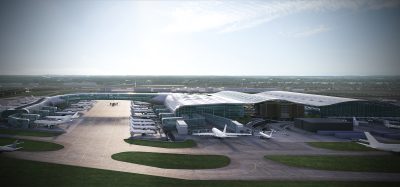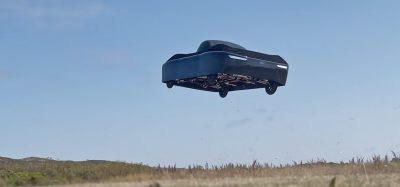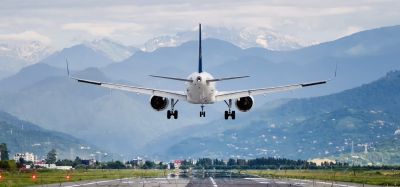Wanted: the courage to reshape Europe’s airspace landscape!
Posted: 13 December 2010 | Daniel Weder, CEO, skyguide | No comments yet
Air transport in Europe today is safe and relatively efficient, despite its high density and the complexity of its operations. This is due in no small part to the continent’s air navigation service providers (ANSPs), of which skyguide is one. But what will the picture look like 10 years from now, if air traffic continues to grow at the rates currently projected? Eurocontrol expects traffic volumes to increase by 2.8% a year. If they do, it will not be too long before the growth can no longer be handled using the present airspace structures – or at least not without major delays.
Air transport in Europe today is safe and relatively efficient, despite its high density and the complexity of its operations. This is due in no small part to the continent’s air navigation service providers (ANSPs), of which skyguide is one. But what will the picture look like 10 years from now, if air traffic continues to grow at the rates currently projected? Eurocontrol expects traffic volumes to increase by 2.8% a year. If they do, it will not be too long before the growth can no longer be handled using the present airspace structures – or at least not without major delays.
This looming problem has been familiar to the industry for some time now. And it is precisely this issue that the European Commission’s Single European Sky initiative is intended to address. By creating larger integrated ‘functional airspace blocks’, far greater harmony should be brought to the continent’s currentlyfragmented airspace. Functional Airspace Block Europe Central (FABEC) is one of these nine new blocks. FABEC alone will handle around six million flights a year – 55% of all of Europe’s air traffic. Skyguide fully supports the European Commission’s endeavours, and is actively involved in establishing FABEC.
If the ambitious objectives set in the areas of safety, capacity, eco-friendliness and cost efficiency are to be achieved, however, a basic paradigm change is required. Some quick wins have already been secured on the FABEC front. To take just one example, a total of 115 new and shorter routings have been adopted for night time operations over the last few months. Around 70 more are planned. The new night network (prior to this, the same routes were flown at night as during the day) benefits airspace users by providing them with shorter routes, lowering their fuel consumption and thus their costs. It delivers clear environmental benefits too, of course. In concrete terms, the new routings will save 800,000 nautical miles of flight a year, which translates into savings of 4,800 tonnes of kerosene, 16,000 tonnes of carbon dioxide emissions and €4 million in lower fuel bills.
It’s a beginning, but it’s not nearly enough. Europe’s current air traffic management system is reaching the limits of its performance. Further improving the present system is becoming increasingly complex and expensive, too: the entire system is getting more and more cumbersome and inefficient. In short, the present air traffic management system and processes are coming to the end of their life cycle. The question is: what comes next? And Europe is by no means in general agreement here.
The aim of FABEC is to optimise the management and monitoring of the airspace of Switzerland, Belgium, France, Germany, Luxembourg and the Netherlands by adopting a single joint approach. FABEC is scheduled to be formally created by the signing of a corresponding international agreement on 2 December 2010. But exactly how the ultimate objective of a single European airspace block is to be achieved is still far from clear.
What is lacking at present are the will and the courage to strike out on new paths. The air traffic services sector is still highly nationally-minded, despite the strongly international nature of the industry it serves. Each individual ANSP enjoys ‘protected status’ in its home country, and the nations involved are reluctant to cede any authorities in the field. The result: very little progress. Too little, given the urgency with which these issues need to be addressed.
The road ahead is a tough and rocky one. And what is clearly needed – alongside the requisite resolve – is leadership, too. Sustainable solutions are called for. And it is up to Europe’s political bodies and ANSPs to rise to the challenge. They can only do so, though, provided they share a clear and unembellished picture of the way Europe’s air traffic services need to be developed. And here I would like to offer my own eight-point proposal:
First of all, major changes can only be mastered together, so all partners must be fully involved in the processes concerned. Europe’s ANSPs must form an integral part of the aviation community. At the European level, they are still insufficiently interlinked. The new ‘Aviation Platform’ that was established by the European Commission this spring could play a key role here.
Secondly, the airspace involved must be divided up in such a way that its users can use it in a manner that is as beneficial and as eco-friendly as possible. Within the new functional airspace blocks, it will be up to the sovereign states involved, together with their air forces, to define a supranational airspace design and assign this to the various air traffic services centres. And in doing so, they must place a firm emphasis on securing optimum performance in safety, efficiency and sustainability terms.
Thirdly, joint air traffic services centres must be the way forward. Such centres should be newly designed from scratch, built and operated in a genuine partnership among all the parties involved. They should also be state-ofthe- art, standardised throughout the continent and interlinked to ensure optimum operating safety. In this connection, Switzerland is currently evaluating various possible future locations for its two regional centres in Geneva and Zurich. Among these is the scenario of a joint centre with its counterparts in Germany and France.
Fourthly, standardised work processes and procedures need to be adopted for all such centres. The principle here is the same as that of the Airbus cockpit. An Airbus pilot can move with ease from one Airbus type to another: Europe’s air traffic controllers should be able to do the same. What we need, in other words, are standardised ‘controllers’ cockpits’ at all our European centres. The potential benefits here are enormous: higher training efficiency, greater deployment flexibility and interoperability. Skyguide intends to standardise its controllers’ workstations at Zurich and Geneva over the next few years.
Fifthly, we need a new definition of the air traffic services business model. All air traffic services centres should be comparable in corebusiness terms, in areas such as safety and efficiency levels. We need to engender controlled competition among these service providers. The key issue here is to separate the core air traffic management business from the centre’s other activities. Skyguide is currently doing this, too.
To this end, sixthly, the ANSPs will need to establish new business units to provide these additional services, which will be able to extend their activities internationally, collaborate with partners and even merge with one another. Skyguide has already established three such business units, for its regional aerodromes, its aeronautical information services and its training activities.
All this demands, seventhly, a radical rethink in our attitudes towards our personnel and an equally new approach among our personnel ranks. Our employees must help form and fashion the new processes required. This responsibility, good working conditions and a constructive social climate are vitally important. The last of these will not be established from one day to the next: it is the product of a long process. But any investment in relations with the various social partners is an investment well spent.
Last but not least, we should have only one point of contact for each functional airspace block within certain forums (these are still to be determined, but should include EASA, the SSC, the SJU, the PRB and the ICB). There must be clear roles and responsibilities for each of these focal points. Each functional airspace block should also be represented in the EU at the Council of Ministers level (which must include Switzerland and Norway, too). The states should define the ‘what’; and the ANSPs, with the states, will define the ‘how’.
That the present situation is untenable is clear to everyone concerned. The need for cross-border collaborations to meet the challenges ahead is equally self-evident. What is required now is the courage to embrace new ideas, new processes, new systems and new structures: the courage to create a radically new airspace ‘landscape’ for Europe’s skies.
About the Author
Daniel Weder
Daniel Weder can draw on more than 30 years of professional experience within the aviation sector. He also completed an MBA at the IMD in Lausanne in 1999. In his Swiss military career, he achieved the rank of captain, and served with a Swiss Air Force radar unit. In his extensive career at Swissair and its successor SWISS, Daniel Weder was an integrative figure in the new Swiss airline’s challenging early years. He was closely involved in resolving several crisis situations, and – particularly in his capacity as Head of Marketing & Services – was a key player in SWISS’s restructuring and subsequent development. He concluded his SWISS career as Managing Director Airport Services & Operations Steering before moving to skyguide in October 2007. Since joining Switzerland’s air navigation service provider, Daniel Weder has been committed to ensuring skyguide’s strong positioning within the Single European Sky, the endeavour to harmonise and thereby bring greater efficiency to the continent’s air traffic services. As well as serving as skyguide’s CEO, he holds several further key positions on international industry bodies, including chairing the strategy committee of the Functional Airspace Block Europe Central (FABEC) project to create a single airspace block in the heart of the continent. In this capacity he also sits on the Aviation Platform established by the European Commission and headed by European Commissioner for Transport Siim Kallas. The forum was created in the wake of the volcanic ash cloud crisis of spring 2010, and is intended to coordinate Europe-wide all future actions that may have a direct impact on the continent’s aviation.
The International Airport Summit is open for registration!
Date: 19 – 20 November 2025
Location: JW Marriott Hotel Berlin
At our flagship event of the year, we will dive into the future of airport operations, with expert-led sessions on passenger experience, innovative smart technologies, baggage handling, airside operations, data, security, and sustainability.
This is where global airport leaders come together to share insights, challenges, and real-world solutions.
Limited complimentary passes are available for eligible professionals – first come, first served!

















